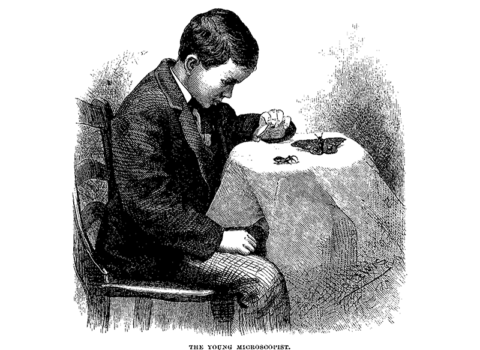A Jerusalem Education
“It gradually dawned on me that since 1967, I had made very little progress in seeing Arabs or empathizing with their plight.”
The renewed violence between Israelis and Palestinians began, coincidentally, while I was hosting a forum in Jerusalem that was intended to foster understanding between the opposing camps. Just days before the participants sat down around a table in the YMCA building on King David Street, three hitchhiking Yeshiva students were kidnapped, presumably by Arabs who wanted to make a statement about Israel’s occupation of the West Bank. The country was in an uproar, and my Harper’s Magazine colleagues and I were right in the middle.
On Sunday, June 15, while our event was taking place, about 25,000 Jews gathered before the Wailing Wall to vent their anguish and rage. And yet, with all the hue and cry over the missing teenagers, our four Israelis showed up as expected, and our three Palestinians managed to pass through military checkpoints to arrive at the appointed time and place.
I was so pleased to have accomplished what I came for that I initially avoided something crucial — something about the deep anger and alienation in the air. In spite of our forum’s urgency and pertinence, and so immersed was I in my first-time visitor’s fascination with Jerusalem, that I underestimated the kidnappings and its probable consequences.
Not that I was Candide in the Holy Land. I’ve been reading about Israel-Palestine — who’s right and who’s wrong; who’s the victim and who’s the perpetrator — since the 1967 war, which is when I really started reading the news in newspapers. In those days, everybody, including me, seemed to be pro-Israel. In the Chicago suburb where I lived, Israelis were the heroes of the Six-Day War and the Arabs the villains, especially Egyptian president Gamal Abdel Nasser. I knew Jews but I certainly didn’t know any Arabs.
Years later, when I went to college at Columbia, I came under the influence of Edward Said, the brilliant literary scholar, writer, and champion of the Palestinian cause. I befriended Vietnam War dissenter George Ball, who was also an arch-critic of America’s special relationship with Israel. Eventually, I would publish Ball and Said in Harper’s. I had come a long way from the automatic pro-Israel sympathies of my childhood and from the influence of Skokie, Illinois, a village with many Holocaust survivors. By my twenties, I was firmly in the camp of Palestinian sympathizers.
But when I got to Jerusalem, I realized something was wrong with my position, though not necessarily about the political realities of the situation. Many Israelis are more vociferous in support of Palestinian rights than I am. Reading the excellent Israeli newspaper Haaretz was a revelation. Columnists like Gideon Levy write incendiary attacks on Benjamin Netanyahu — and on the settlers movement — that would never appear in a mainstream American newspaper. While lamenting the kidnappings, Haaretz clearly blamed the Israeli Occupation for what had happened to the unfortunate high school students.
My ignorance of Israeli–Palestinian relations is born mostly of my ignorance of Arabs and Arab culture. In Jerusalem, I could have it both ways — liberal publisher and critic of Israel — while very much enjoying the benefits of Israeli security and culture. I had a lovely time eating dinner in the German Colony, a lush and upscale neighborhood that reminded me of Key West. I ate delicious baladi and drank very good white wine grown on the Golan Heights. I was overwhelmed by the beauty of the Old City at sunset and mixed, not uncomfortably, with the orthodox Jews at the Wailing Wall. I walked from the Jewish Quarter, through the Muslim Quarter, all the way to the Damascus Gate, knowing I was well protected by the heavily armed Israeli soldiers stationed along the way. Taking the Via Dolorosa past the Church of the Holy Sepulchre, I felt myself in complete safety and noted the somber faces of the Arab merchants only in passing. When I took pictures of Arab women selling vegetables in the street I could ignore their objections.
It gradually dawned on me that since 1967, I had made very little progress in seeing Arabs or empathizing with their plight. It was easier to be with Israelis, in New York or Israel — they’re so less different from me than Arabs. Easier to experience the suffering of Palestinians through Jewish eyes — Ari Shavit’s book My Promised Land or Simha Flapan’s The Birth of Israel — than take the trouble to read an Arab version of what happened to the Palestinians.
Charmed by my new Arab acquaintances from the forum we convened, and by the left-wing Israeli who came to dinner afterward, I began to feel uncomfortable about my free ride in Jerusalem. The next day, on the way back to the airport, I asked my cab driver to show me the wall that separates Israelis and Arabs in the Occupied Territories.
If you take Route 443 instead of the main highway west toward Tel Aviv, you can easily see the huge wall with its gates wide enough for Israeli tanks; Arabs queuing to cross the highway on barred pedestrian bridges watched closely by the military; Arab villages far away. Too bad, said my driver. You used to be able to visit these towns and buy things from the Arabs.
Yes, and it’s too bad I hardly know any Arabs.



